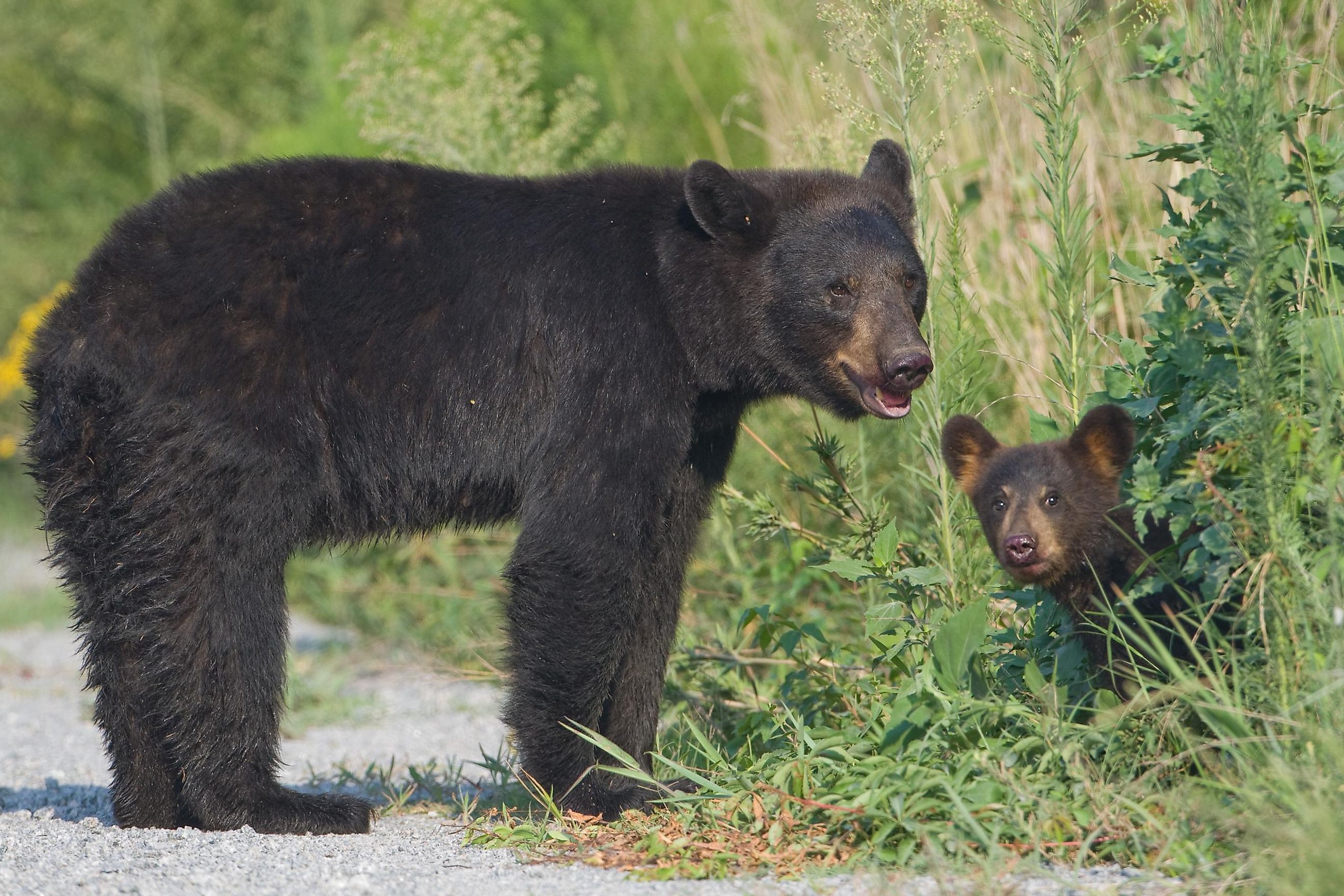
10 Animals That Live In North Carolina
The US state of North Carolina is known for its diverse landscapes, from its coastal beaches to mountainous regions. The wide range of species that live in the state is a reflection of this diversity. From majestic deer and black bears to colorful songbirds and fascinating reptiles, North Carolina is home to a wide range of wildlife. At least 990 species of vertebrates (excluding the marine fishes) and over 3,500 invertebrates reside in this state. Here are some iconic animals you might encounter while visiting the Tar Heel State.
- Eastern Gray Squirrel
- Red Wolf
- Carolina Wren
- White-tailed Deer
- Bluegill
- Raccoon
- American Alligator
- American Black Bear
- Cottonmouth
- Nine-banded Armadillo
Eastern Gray Squirrel
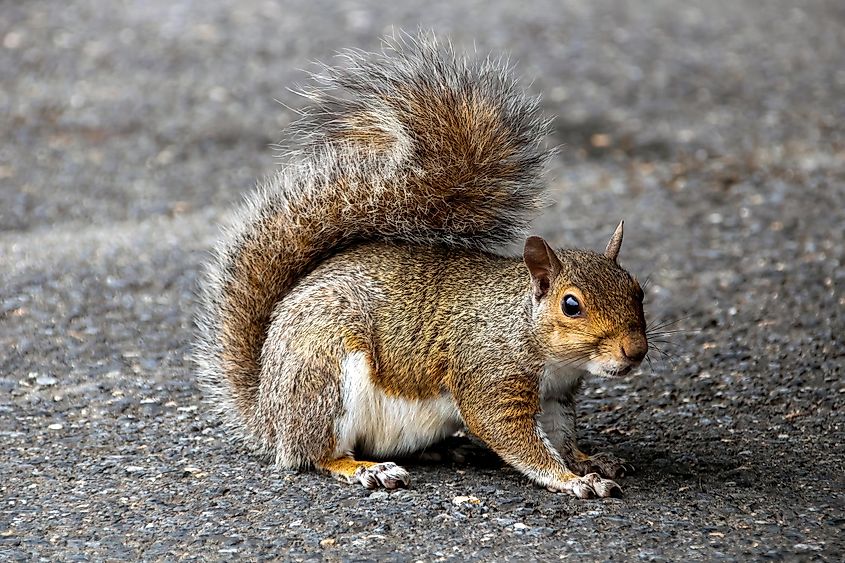
The Eastern gray squirrel (Sciurus carolinensis) has been an official state mammal of North Carolina since 1969. These small, adorable creatures are a common sight in North Carolina's woodlands and parks. They normally have grayish-brown fur, a whitish belly, and a notably bushy tail. Eastern grey squirrels have great problem-solving abilities. They are omnivores with a varied diet ranging from seeds, nuts, tree bark, flowers, and fruits to insects, rodents, small birds, eggs, and more. They can remember the location of food caches and can adapt to changing environmental conditions. They do not hibernate throughout the winter but do sleep a lot, sometimes for days if the weather is awful. The species is 'Least Concern' on the IUCN Red List.
Red Wolf
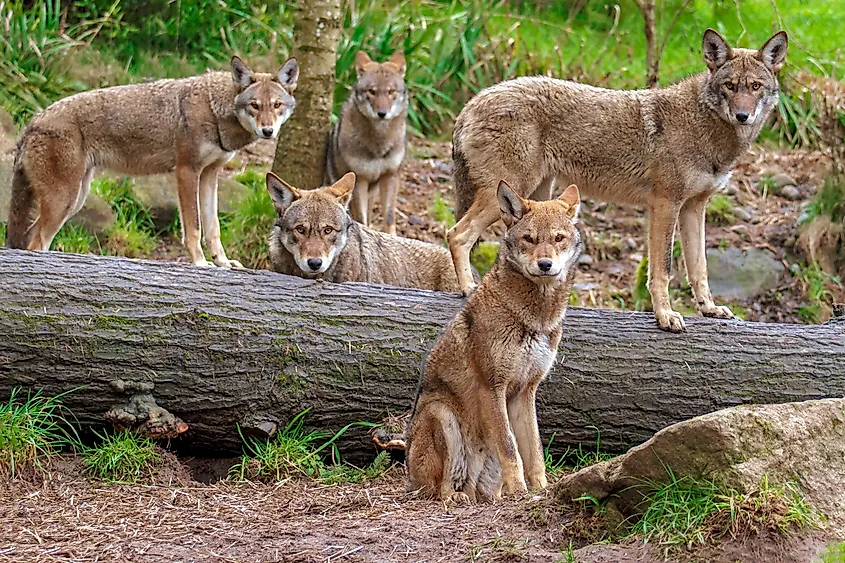
The red wolf (Canis rufus) is one of the most threatened animals in North Carolina. The red wolf is smaller than the gray wolf and has a reddish-brown coat with black fur on the tips of its ears and tail. The red wolf also has a shorter snout and ears than the gray wolf. Typically, white-tailed deers, rabbits, raccoons, and smaller rodents make up their diet. Additionally, wolves consume carrion and occasionally depend on insects, berries, and other flora. They are generally nocturnal animals, which means they are awake at night and resting throughout the day. These wolves are labeled critically endangered, and conservation efforts are ongoing to save the remaining wolves. Currently, there is only one population of this species in the wild in the state, whose range encompasses the Albermarle Peninsula's five countries in eastern North Carolina.
Carolina Wren
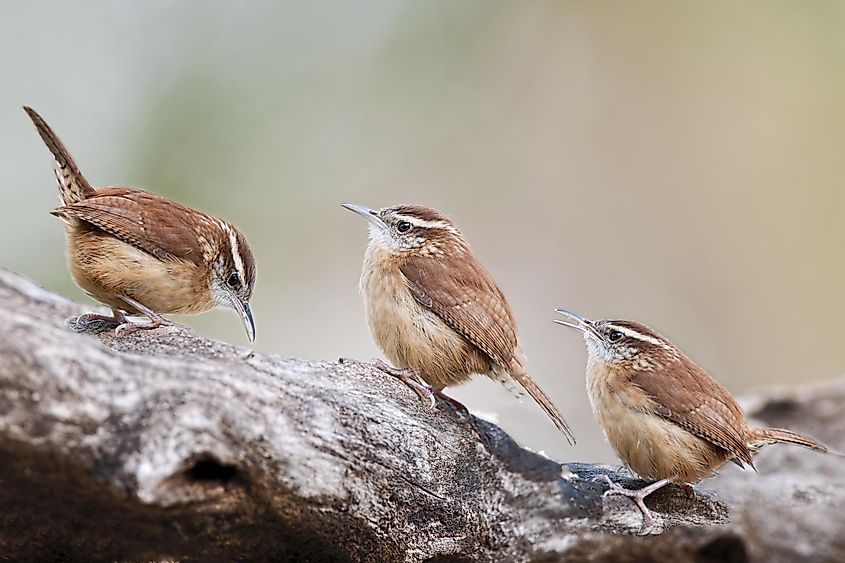
The Carolina Wren (Thryothorus ludovicianus) is a common bird species found throughout North Carolina. These small, brightly colored birds are energetic and active and have distinctive, loud songs. The male and female sing distinct parts and typically intertwine them such that it appears as though just one bird is singing. One of the most notable characteristics of the Carolina Wren is its bright rust-colored plumage. They are opportunistic feeders and will eat a wide variety of insects, fruits, and seeds. They also eat small invertebrates, such as spiders and snails.
White-Tailed Deer
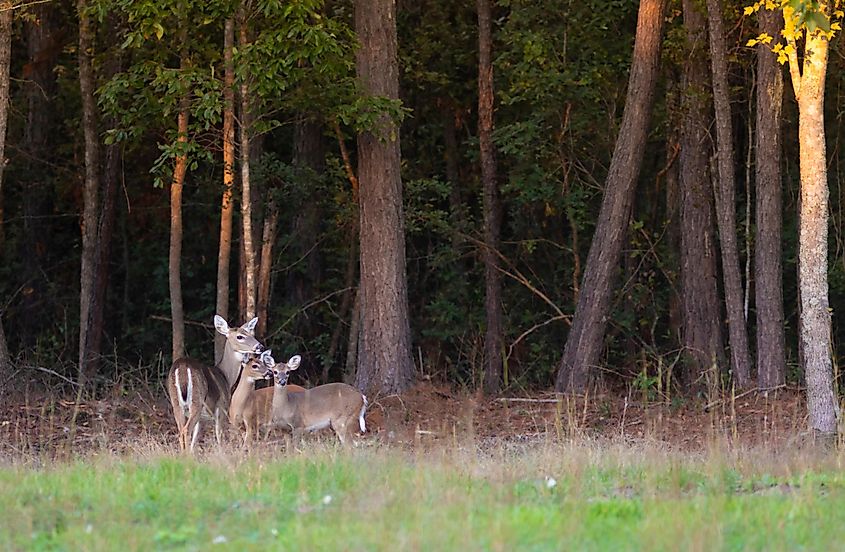
This majestic animal (Odocoileus virginianus) is a common sight throughout North Carolina, and you can meet them in various habitats, from forests to fields. The state currently hosts a population of around 1 million white-tailed deer. These animals adapt to environmental changes and can thrive in areas modified by human activity. In North Carolina, white-tailed deer are most active during the early morning and late evening. They are herbivores, and their diet consists mainly of leaves, twigs, and fruits. These deer are an absolute delight to watch as they gently prance around the greenery, feeding on the leaves or nuzzling each other. No wonder the adored-by-all image of Bambi from Disney comes from a white-tailed deer!
Bluegill
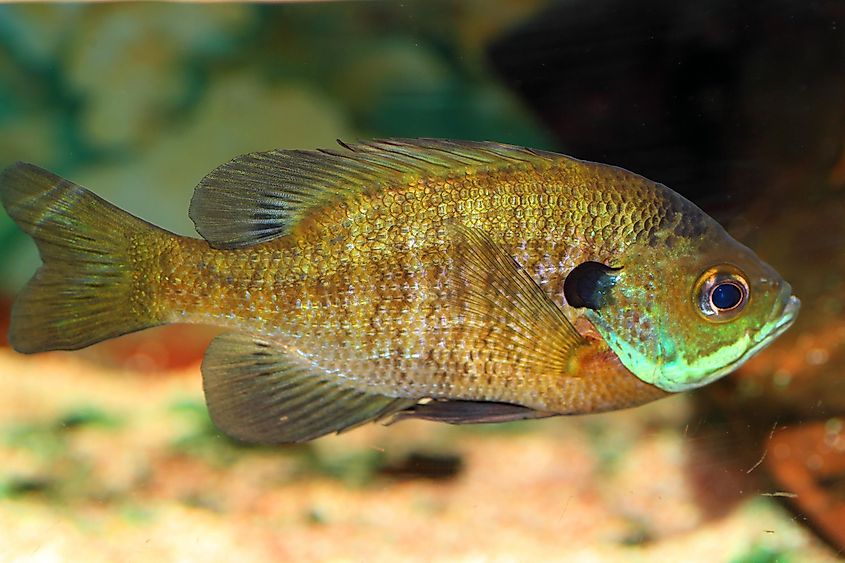
The bluegill (Lepomis macrochirus) is a freshwater fish native to North America, including North Carolina. It occurs in all major river basins of North Carolina. A member of the sunfish family, it adorns bright blue and orange coloration on the gill plate and fins, hence the name. The fish can grow up to 12 inches in length and weigh up to one pound. It is typically found in ponds, lakes, and slow-moving streams and rivers. Interestingly, bluegills can swim backward. They use specific muscles in their pectoral, anal, and dorsal fins to carry out this act.
Raccoon
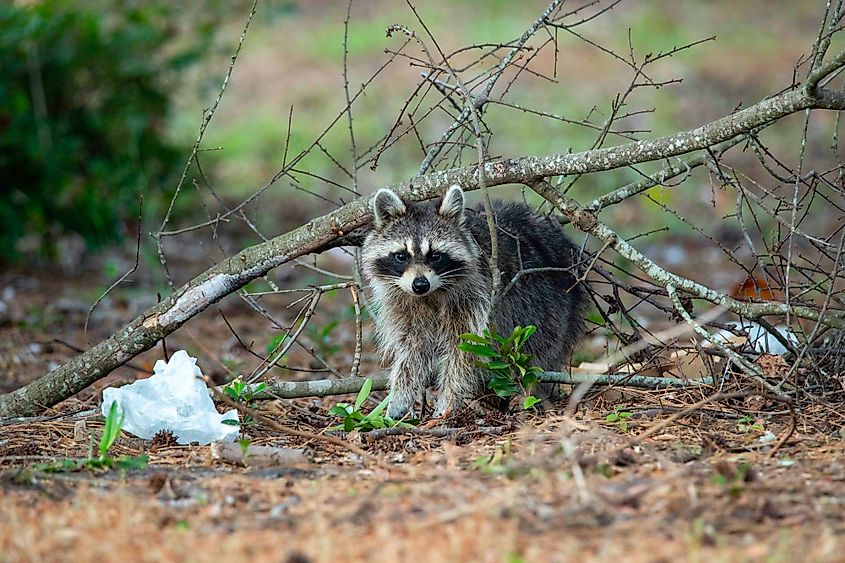
Raccoons are a common sight in North Carolina. You can find them in both urban and rural areas throughout the state. However, they are most common in the state's coastal and piedmont regions. They are clever and adaptable animals. Raccoons are omnivores and eat just about anything, including fruits, vegetables, insects, fish, and small mammals. They are also quite vocal, with a variety of different calls and vocalizations used to communicate with other raccoons. Raccoons only have a short lifespan of two to three years in the wild, but they can live up to 20 years in captivity.
American Alligator
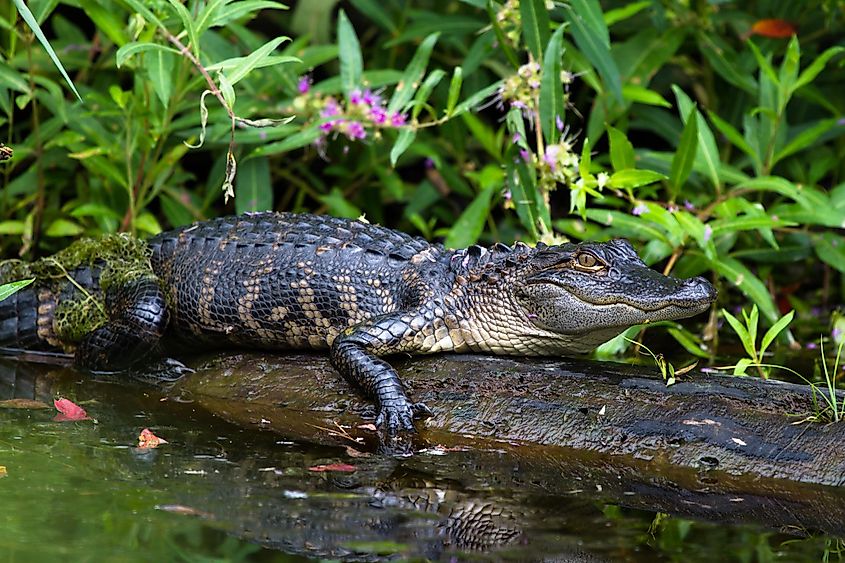
The American alligator resides in North Carolina, particularly in the coastal regions. It is estimated that only about 1,000 alligators are left in the state. These large reptiles live in freshwater swamps, marshes, and rivers and continue to grow throughout their entire lives. However, since North Carolina has a more northerly latitude, the alligators here generally do not grow as large as those in Florida or other warmer states. The largest alligator ever found in the state was a 635-pound giant that had been unfortunately hit by a car in Manns Harbor in 2014.
Alligators are apex predators in their ecosystem and play a vital role in controlling the population of other animals, such as fish, birds, and smaller mammals. Despite their fearsome reputation, alligators are generally not a threat to humans. However, it is important to be cautious when swimming or wading in areas where alligators live.
American Black Bear
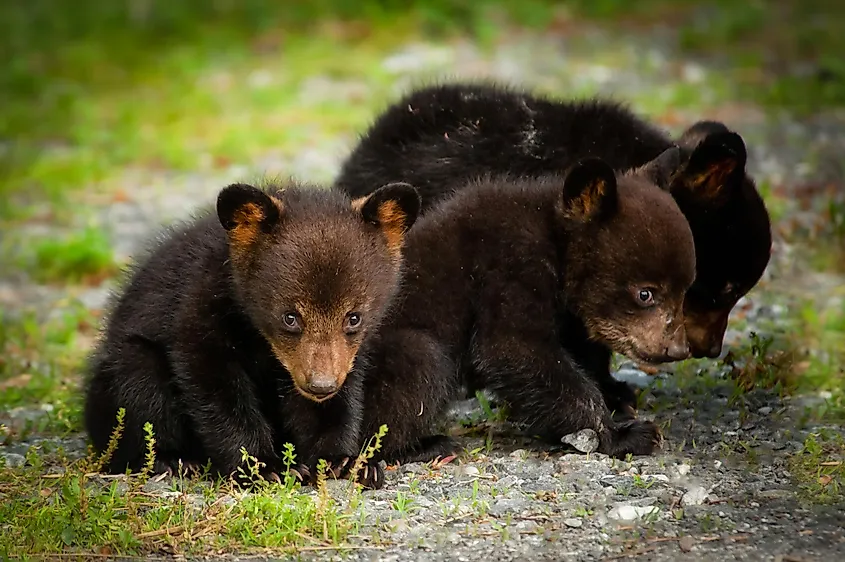
The American black bear (Ursus americanus) is the largest mammal and the only bear species found in North Carolina. The comeback of the black bear in North Carolina is a reason to celebrate. There was a time in the past when the region teemed with these bears, but early settlers persecuted them, and later mass-scale habitat loss wiped out much of North Carolina's black bear population. By the 1900s, there was hardly a black bear left in the state. However, conservation efforts in recent decades need to be applauded, as black bear populations have recovered well and are now distributed across nearly 60% of the state. What more? Albemarle-Pamlico Peninsula in North Carolina has the highest black bear densities in the world!
These bears have shaggy black fur and an omnivorous diet, which includes everything from plants to animals. Black bears are generally shy and elusive and usually avoid contact with humans. However, if they feel threatened or cornered, they can become aggressive. They can move at 35 miles per hour over short distances. Therefore, do not try to outrun a bear.
Cottonmouth
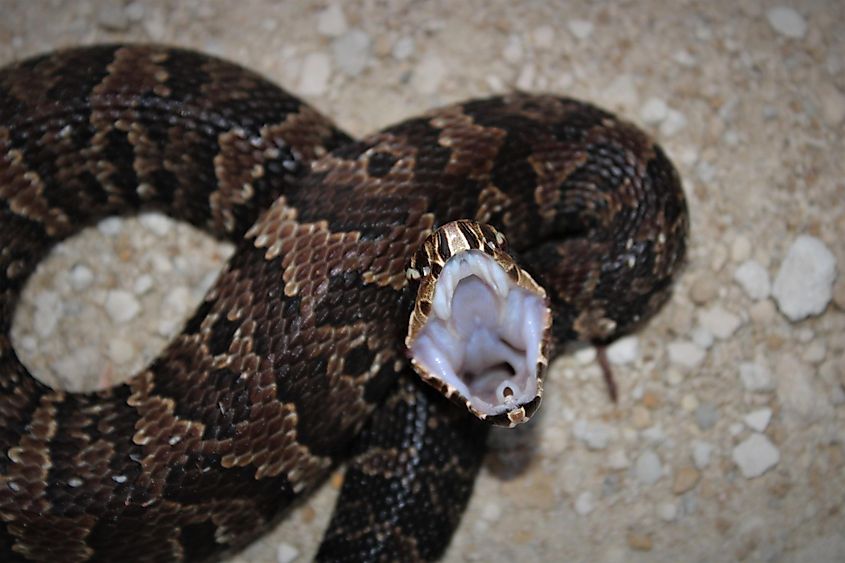
The Cottonmouth (Agkistrodon piscivorus), also known as the water moccasin, is a venomous snake found in North Carolina. It is a member of the pit viper family and lives in various habitats, including swamps, marshes, and slow-moving streams. These snakes are typically dark in color, with a distinct pattern of dark bands on their bodies. They have a thick, stocky build and a wide head. The white interior of their mouths gives them their common name of "cottonmouth." Cottonmouths prey on a variety of animals, from birds and amphibians to small mammals, fish, and insects. It even feeds on small snakes like black rat snakes and turtles.
This snake produces a highly potent cytotoxic venom that can be potentially fatal. However, deaths from cottonmouth bites are rare as antivenom treatment is available. Also, contrary to popular belief, cottonmouths can bite while swimming.
Nine-Banded Armadillo
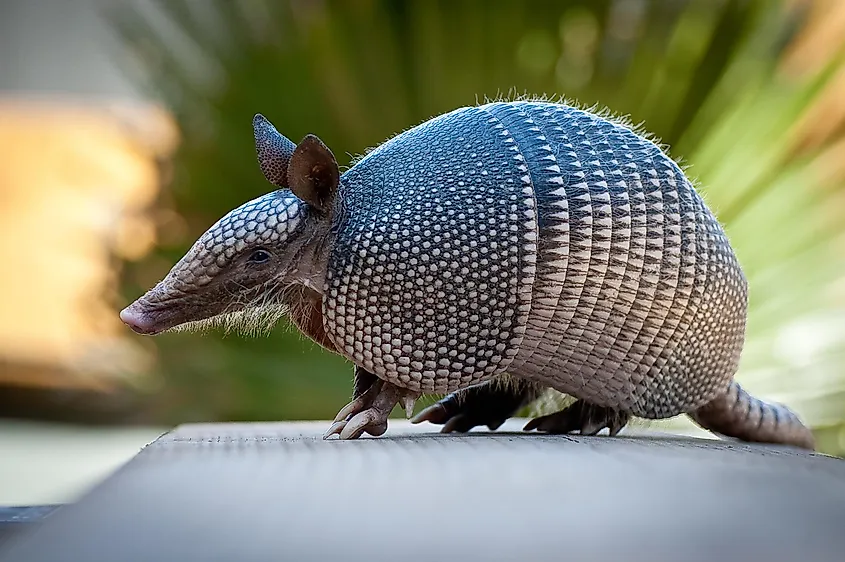
The nine-banded armadillo (Dasypus novemcinctus) is an interesting mammal you can meet in North Carolina. This native South American species was first spotted in the United States in the 1800s in Texas. Since then, its range has spread across much of the southern United States. In North Carolina, the nine-banded armadillo was first seen in 2007. Till now, it has been recorded in 25 counties of the state.
The nine-banded armadillo has distinctive armored shells made up of bony plates called scutes. It is also known for its long, pointed snout and sharp claws, which it uses for digging. These insectivorous animals feed on termites, ants, and other invertebrates found in the ground. One very interesting fact about this animal is that it can hold its breath for up to six minutes and can swim or "walk" along the bottom of rivers.
The above described ten animals offer just a small glimpse of the vast wild wonders residing in North Carolina. So, whether you are an ardent nature lover and wildlife enthusiast or one just looking for a unique outdoor experience, North Carolina has something to offer everyone. So take a trip to this beautiful state and discover its amazing wildlife.











